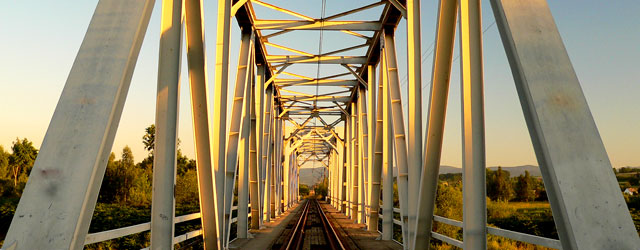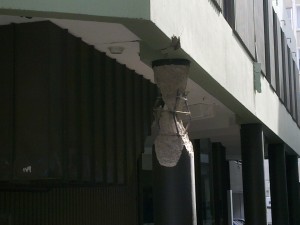Hyland Consultants developed fatigue life design software for the response of lighting poles to New Zealand wind conditions. Current code based S-N methods are not well suited for the design of structures subjected to variable loadings due to wind. S-N methods can result in over designed or unreliable structures. read article »
Non-ductile Concrete Columns
Testing of circular concrete columns following the Canterbury Earthquakes has shown that sudden non-ductile failure can occur where the spiral reinforcing complies with the Concrete Structures design standard NZS 3101:1982 cl 6.4.7.1(b).
This clause only required spiral reinforcing spacing to be not greater than 16 times the diameter of the longitudinal column reinforcing steel or 48 times the diameter of the spiral reinforcing steel. read article »
Southwest Pacific Earthquake Resilience
A set of six initiatives to collectively improve the resilience of nations in the Southwest Pacific have been identified and agreed as follows:
1. Set up local seismograph and accelerograph monitoring networks in each nation
2. Improve earthquake, tsunami and volcano hazard mapping
3. Set up a Southwest Pacific Standards Forum
4. Development and land use planning guidelines to consider seismic and tsunami risks and response
5. Earthquake resilience capacity building
6. Set up legislative frameworks to enable effective response to earthquakes and tsunamis to support local community efforts. read article »
Building Damage Evaluations
Dr Clark Hyland assisted Christchurch City Council plan and manage the building damage evaluations in response to the Darfield Earthquake on Saturday 4th September 2010. As noted in the article in the New Zealand Herald the investment in earthquake resilience and preparations by national and local government agencies over the years proved beneficial for that level of earthquake.
Does the Steel Make the Grade?
How do you know whether the steel you have ordered truly meets the standard specification and grade you specified?
You may hope that the mill test certificate will verify grade compliance and that the mechanical and chemical composition properties reported are reliable.
However unless the steel manufacturer uses a testing laboratory that is accredited by a recognised testing body, the mill test certificate should be treated with caution.
Particular care should be exercised when a mill test certificate claims compliance with multiple and varying international specifications and grades.





